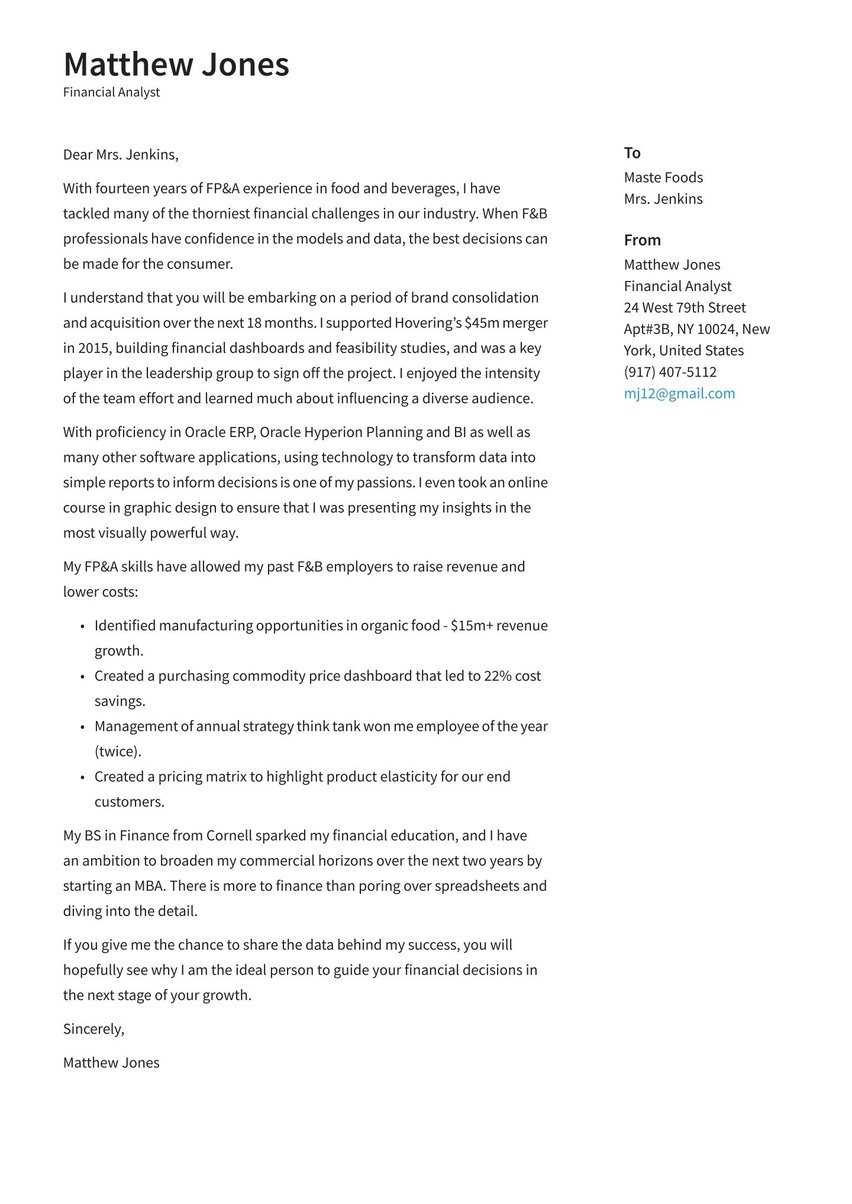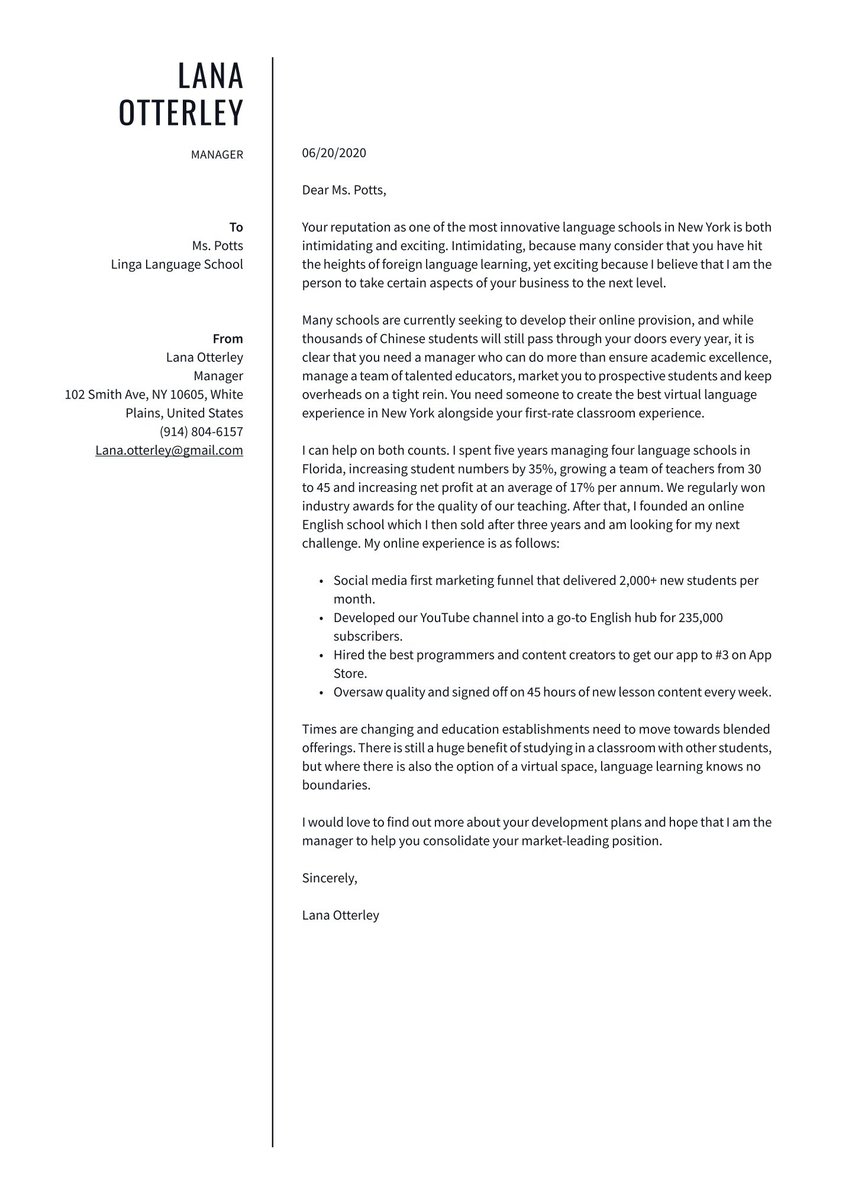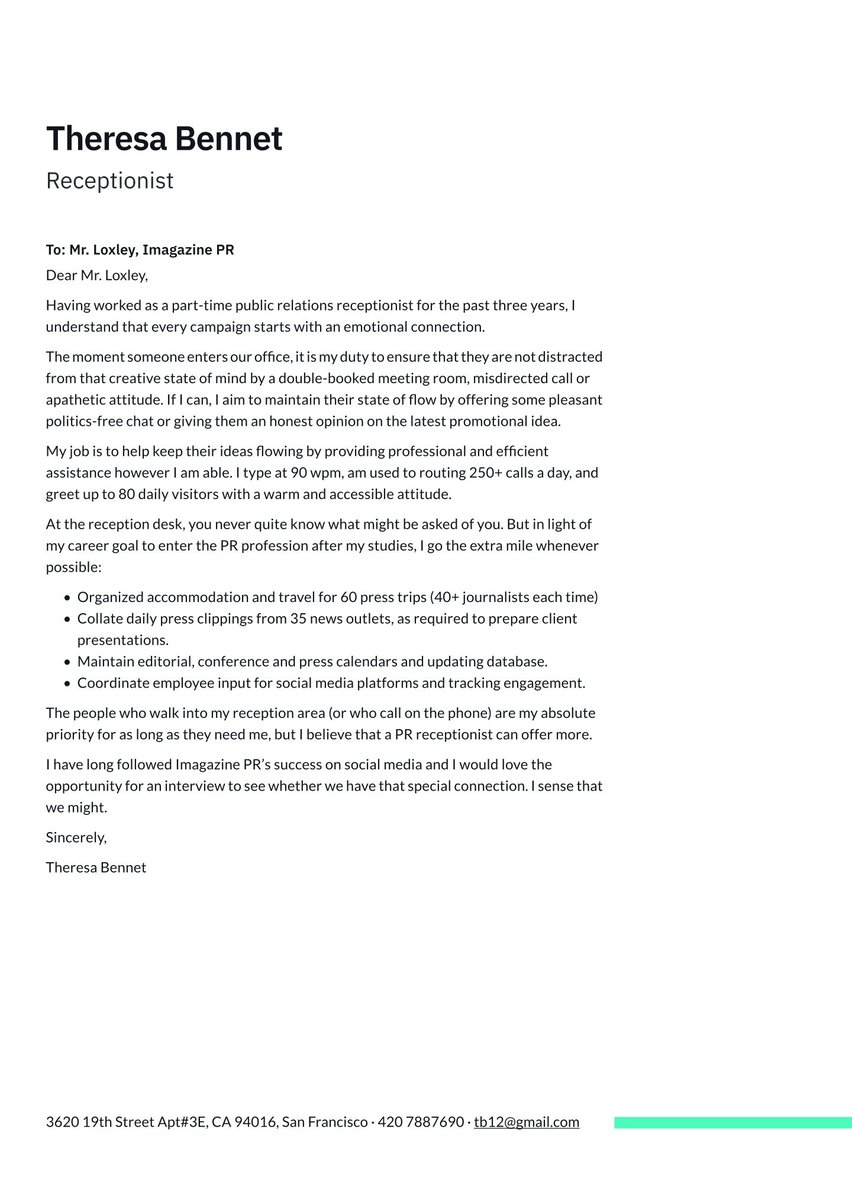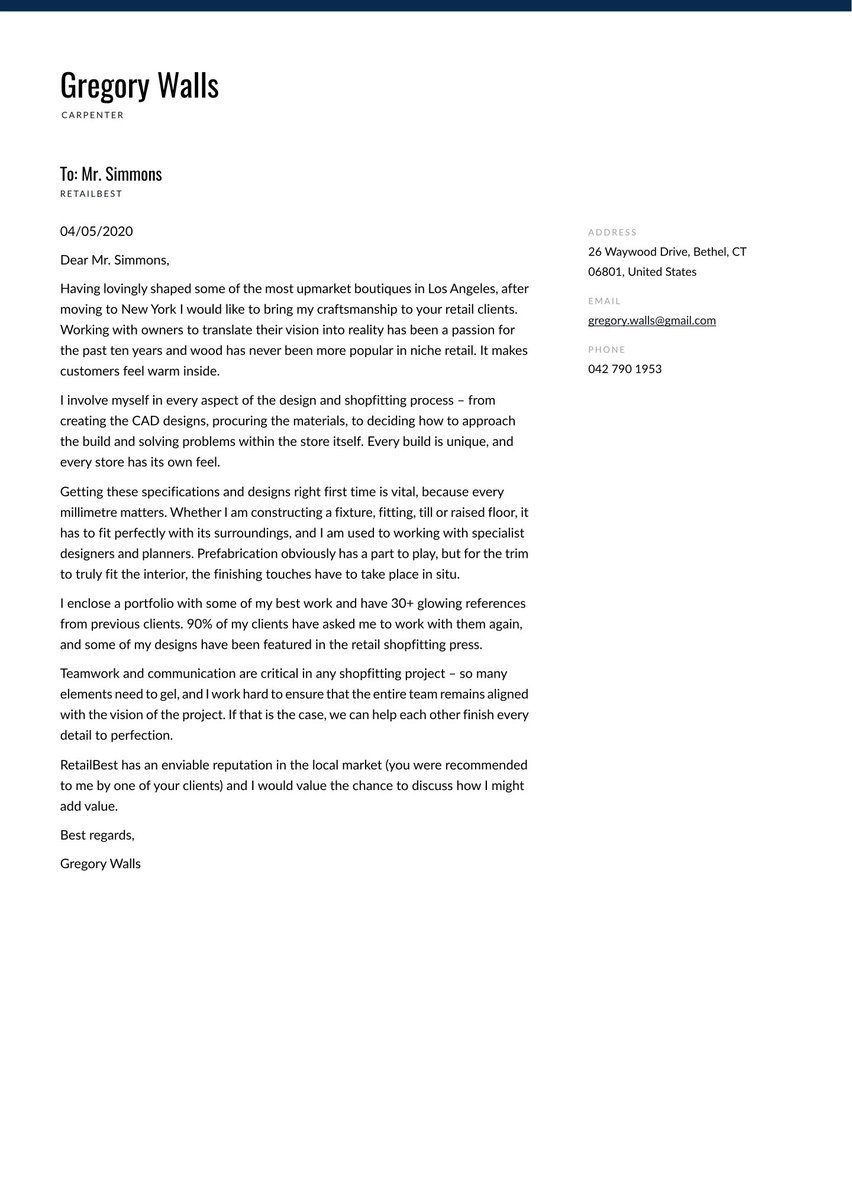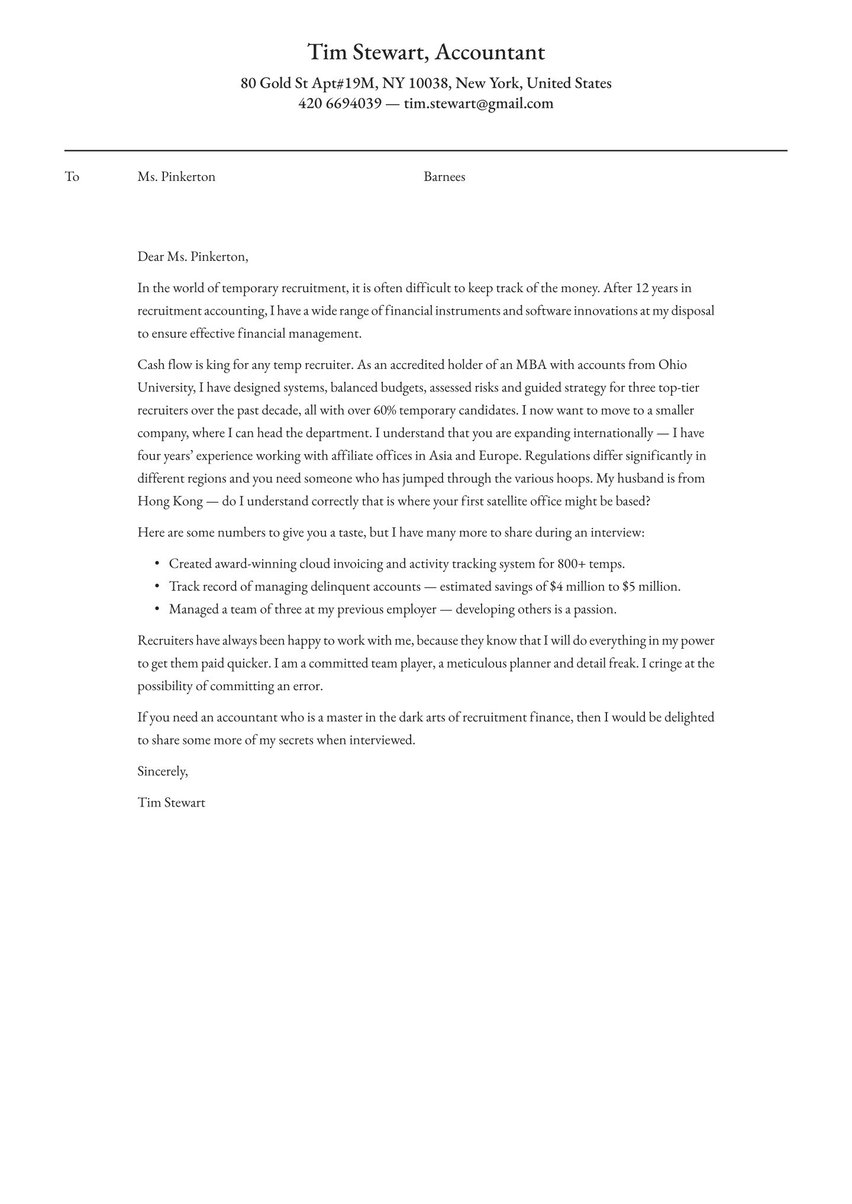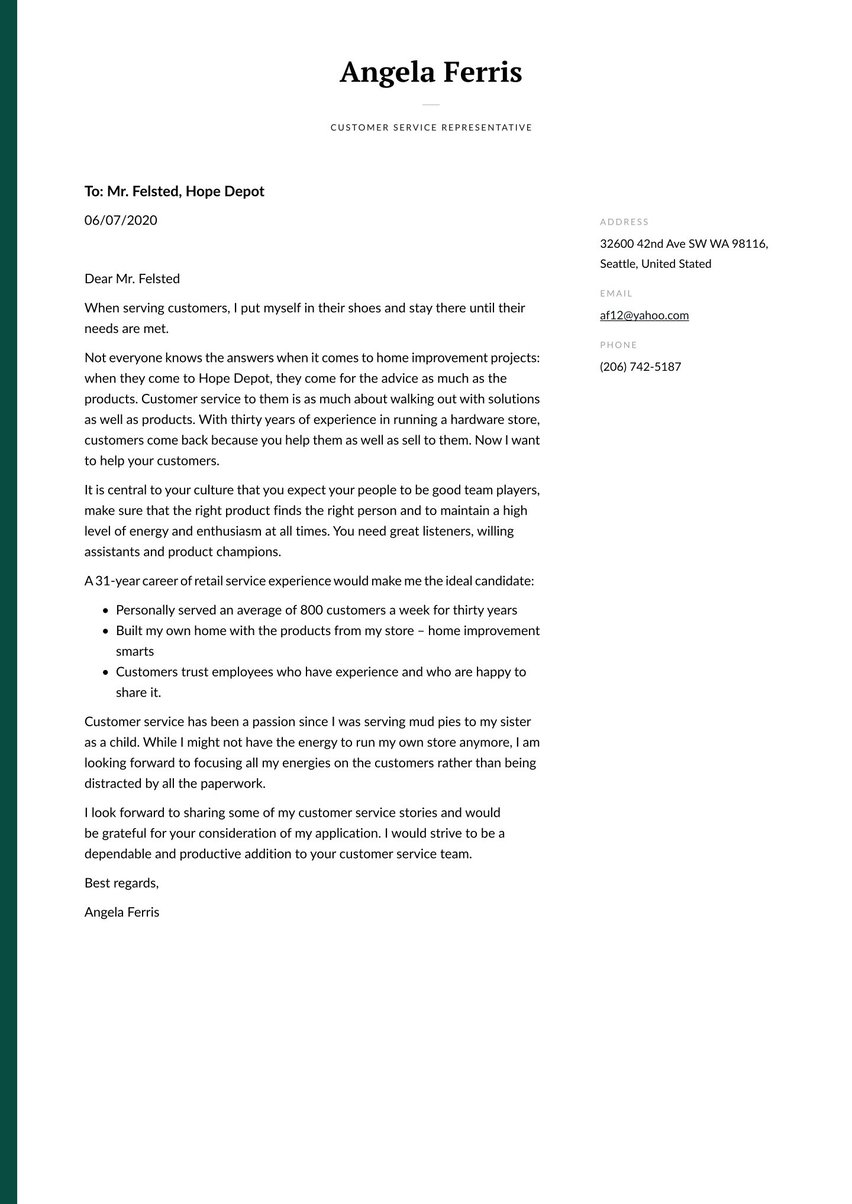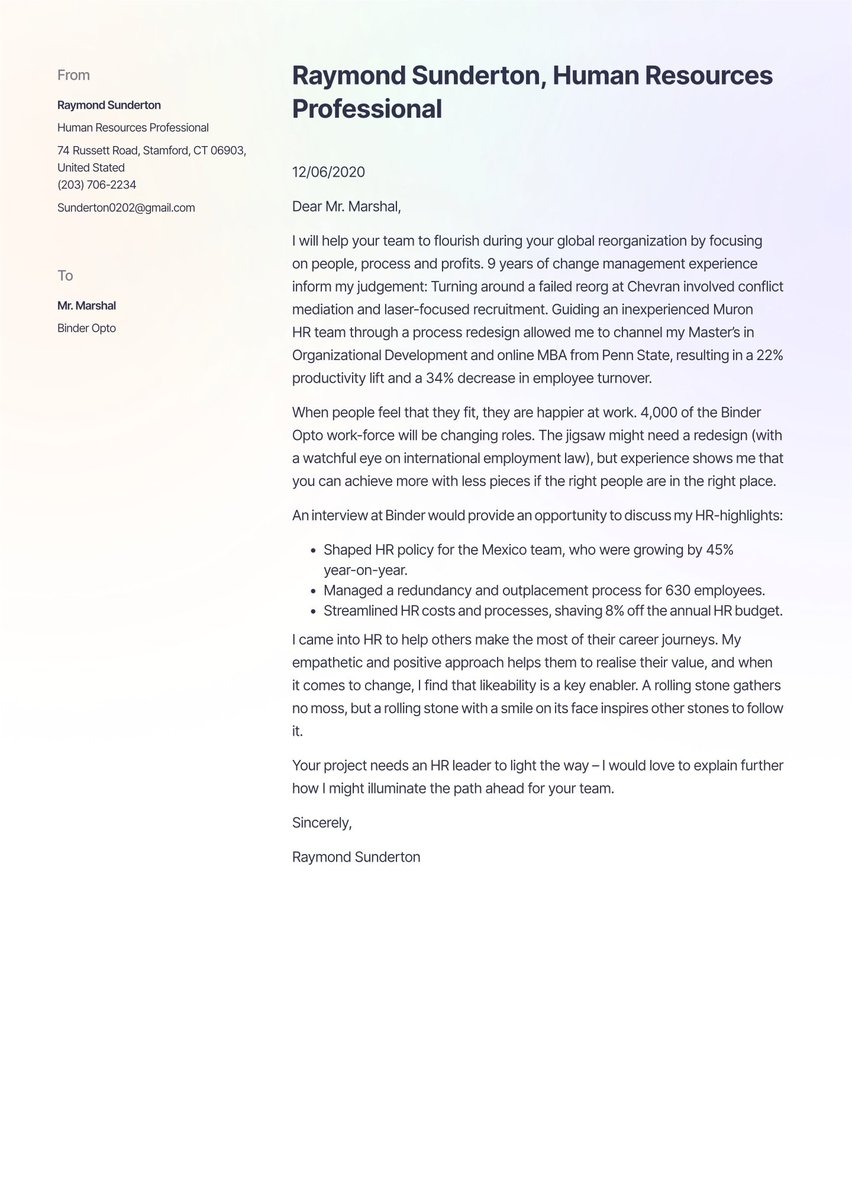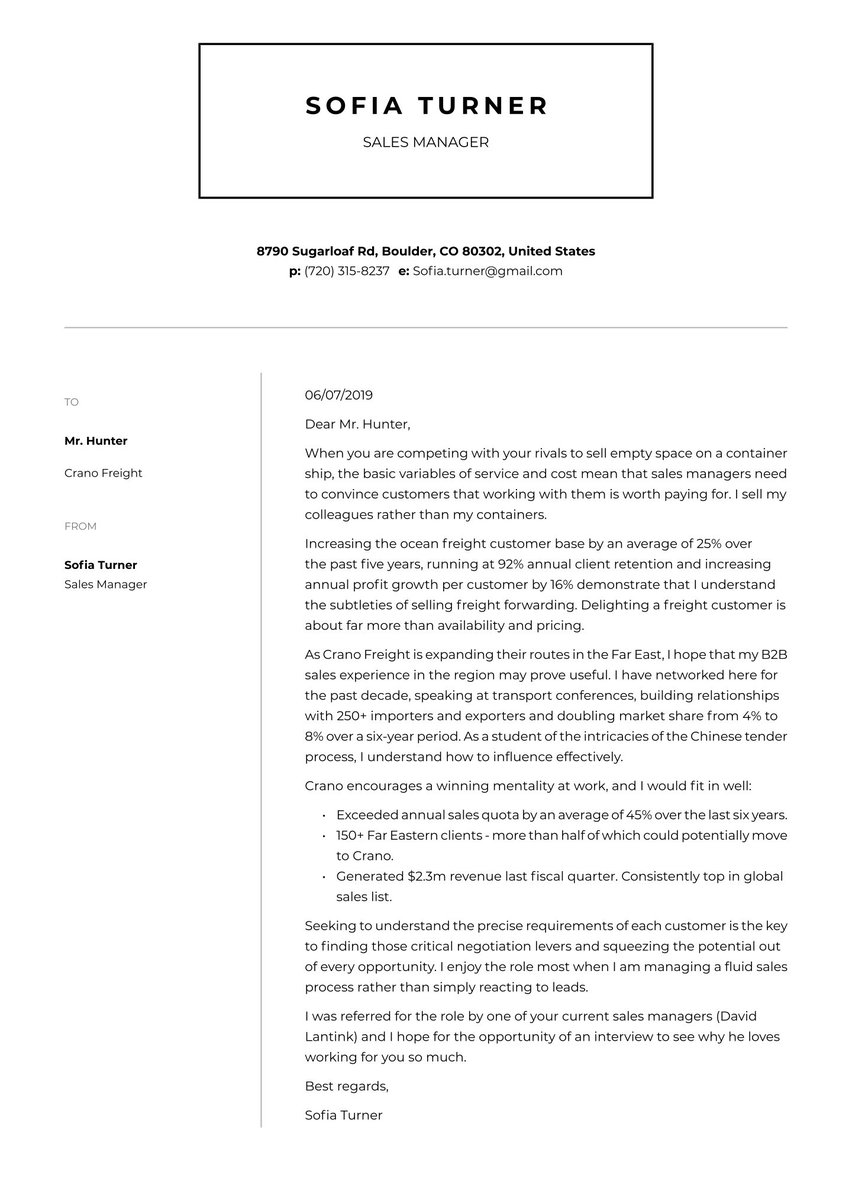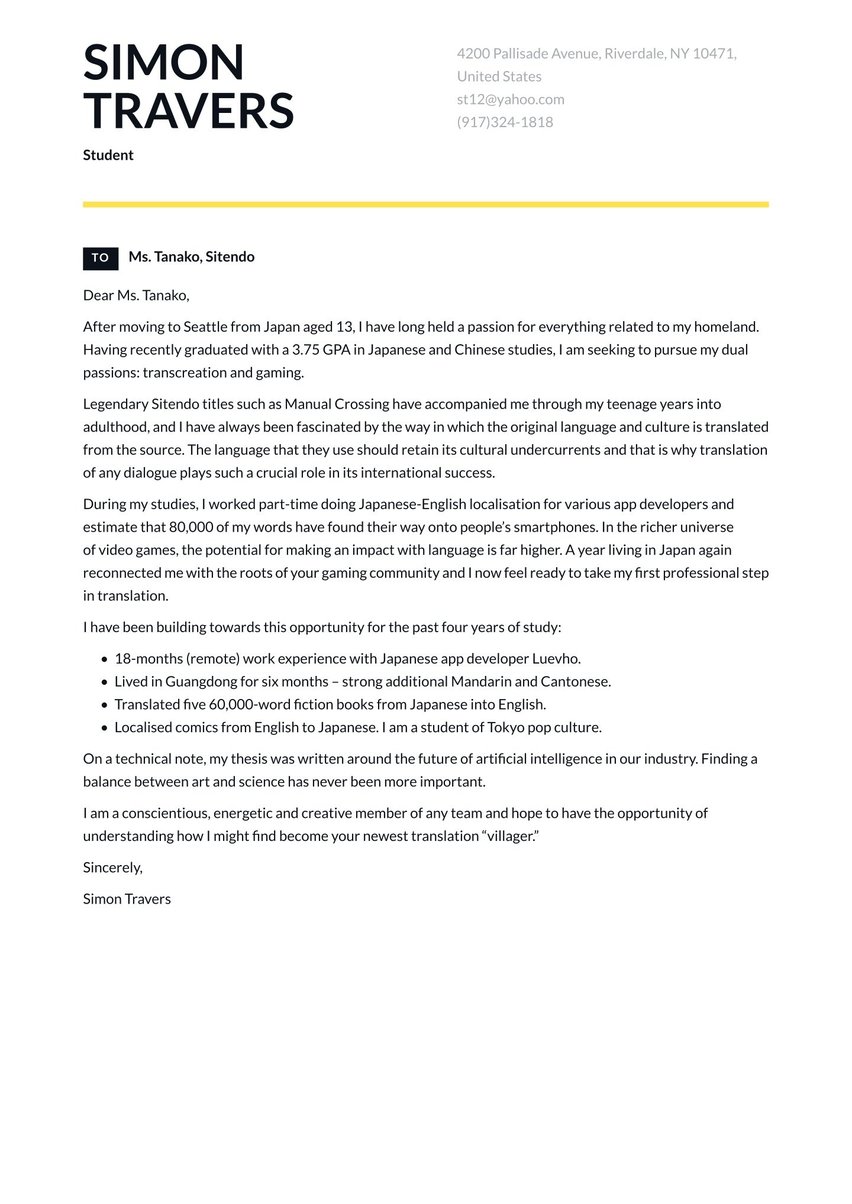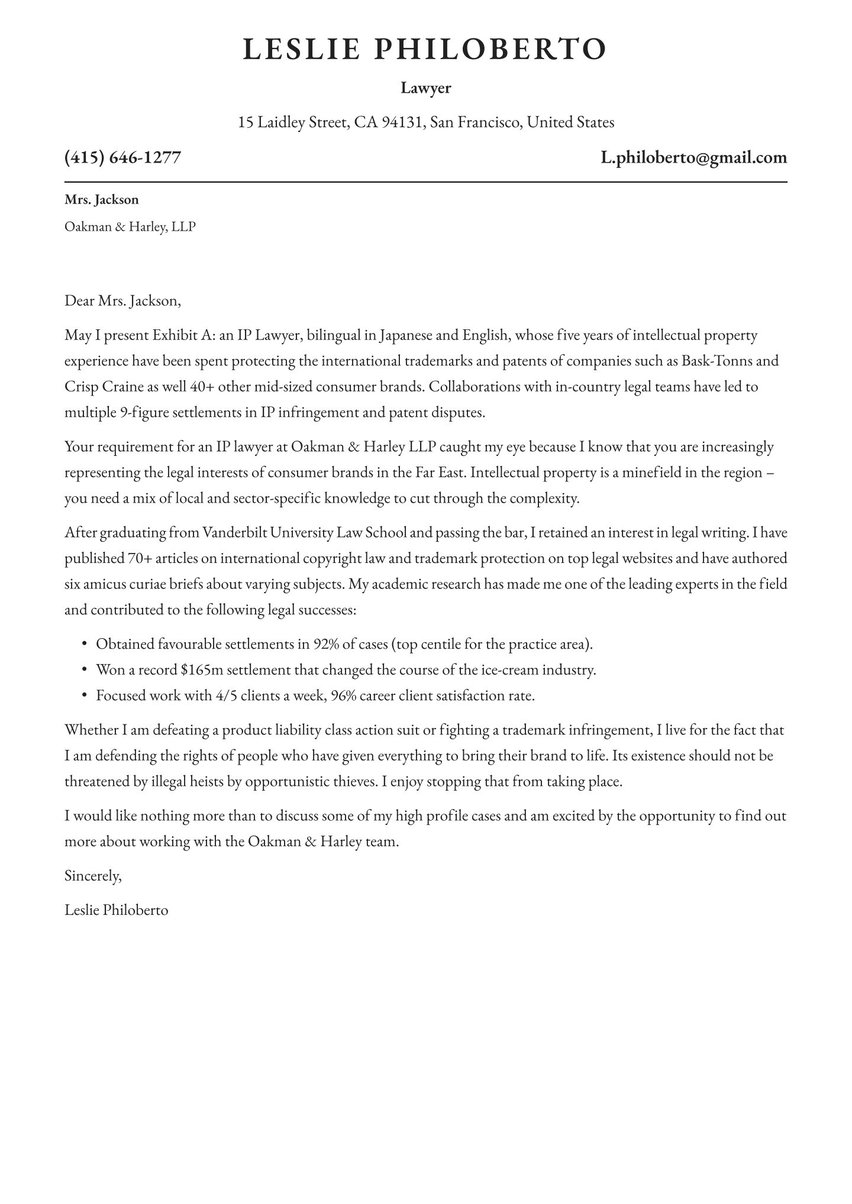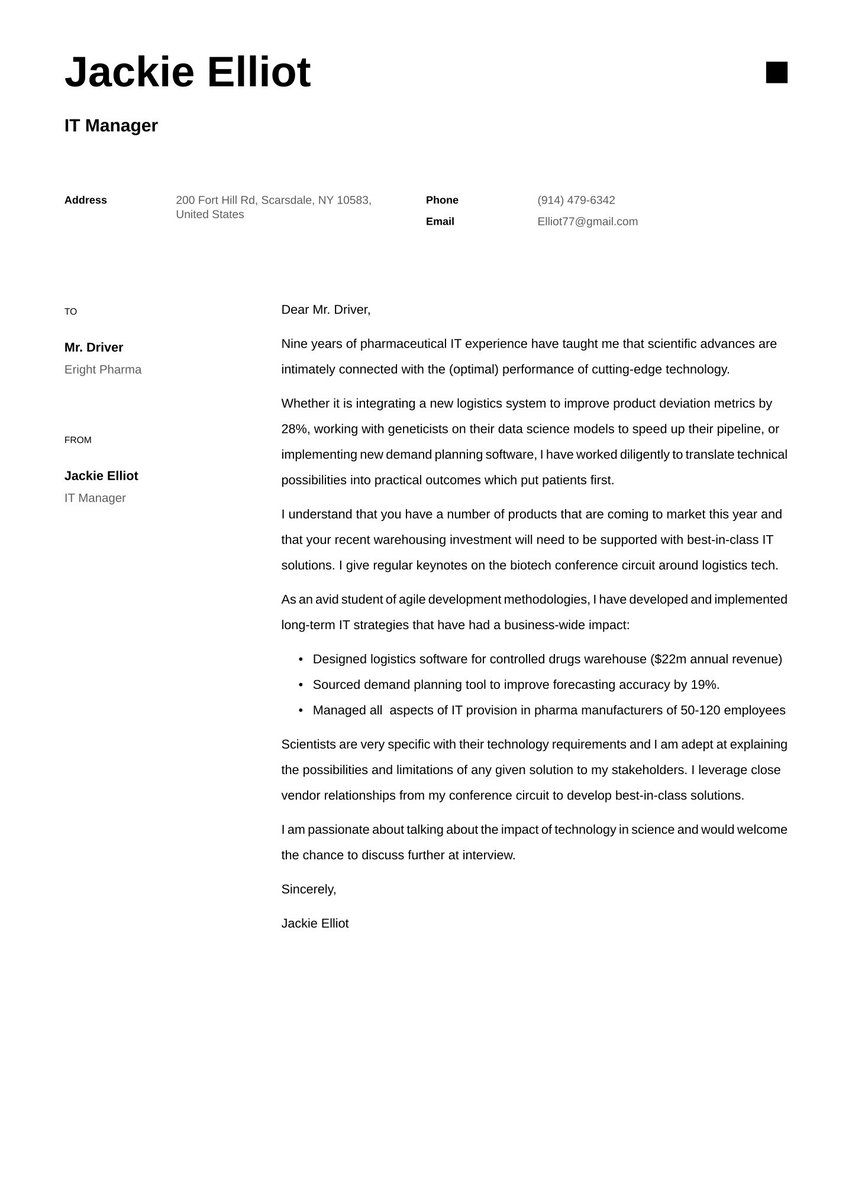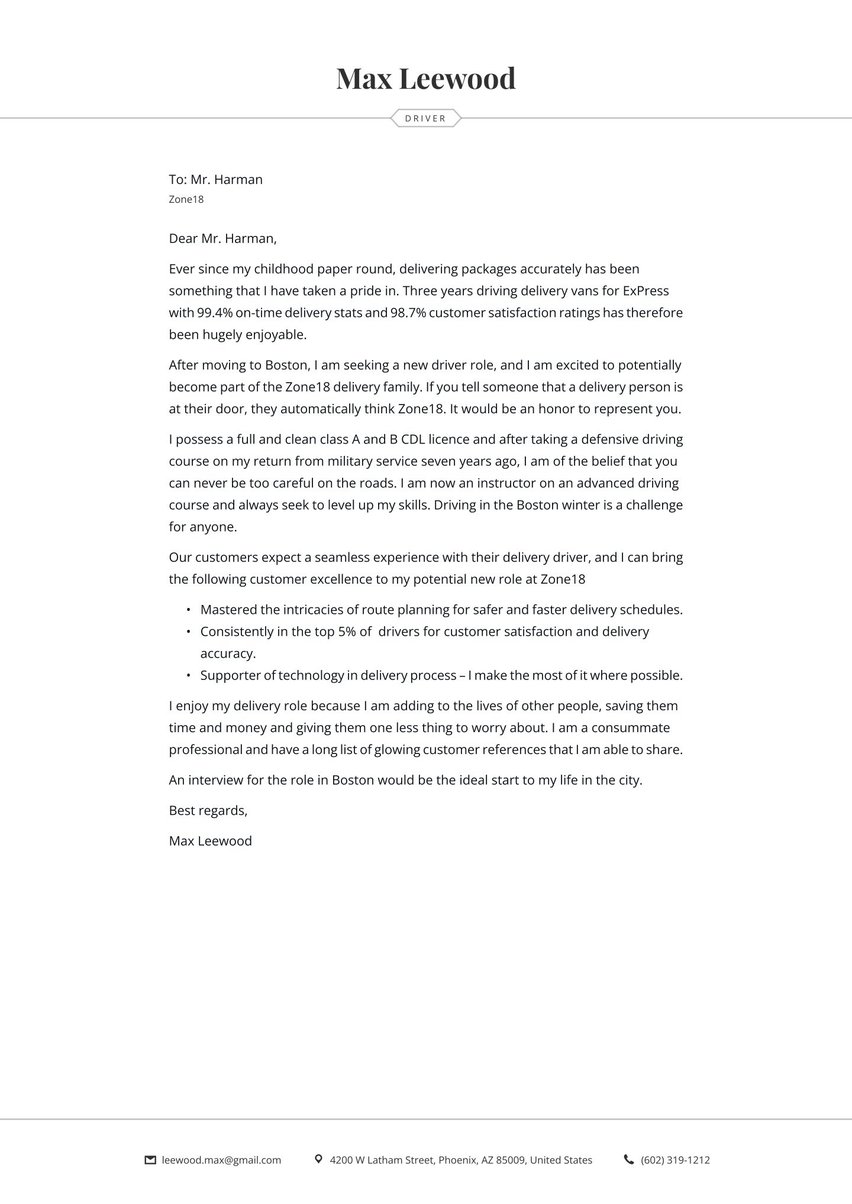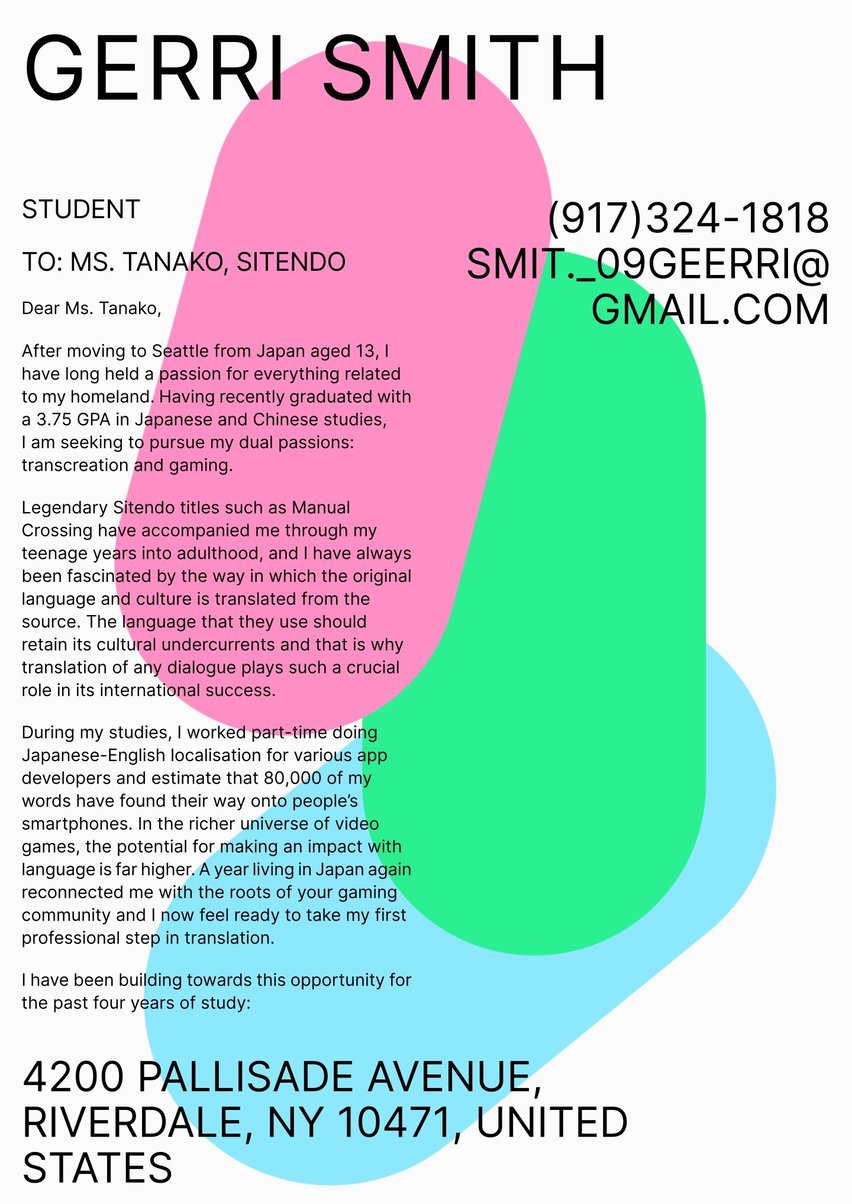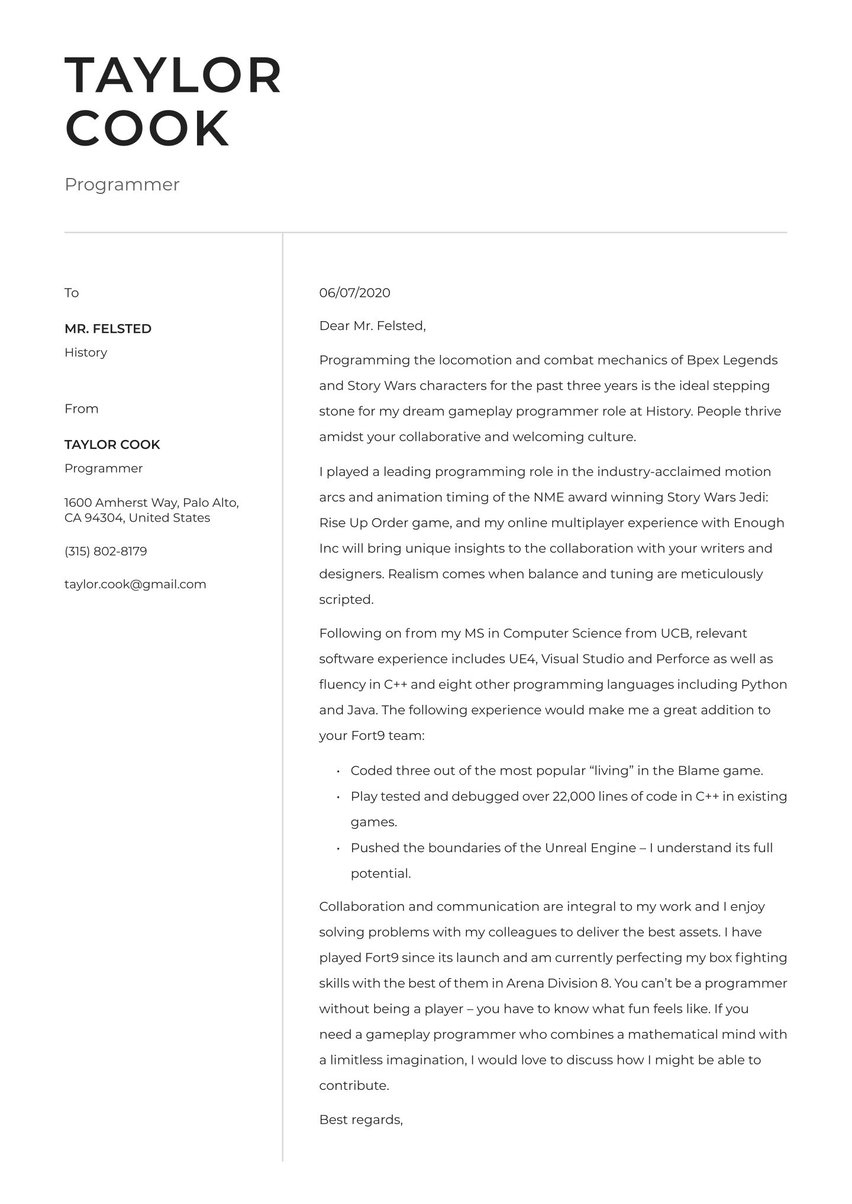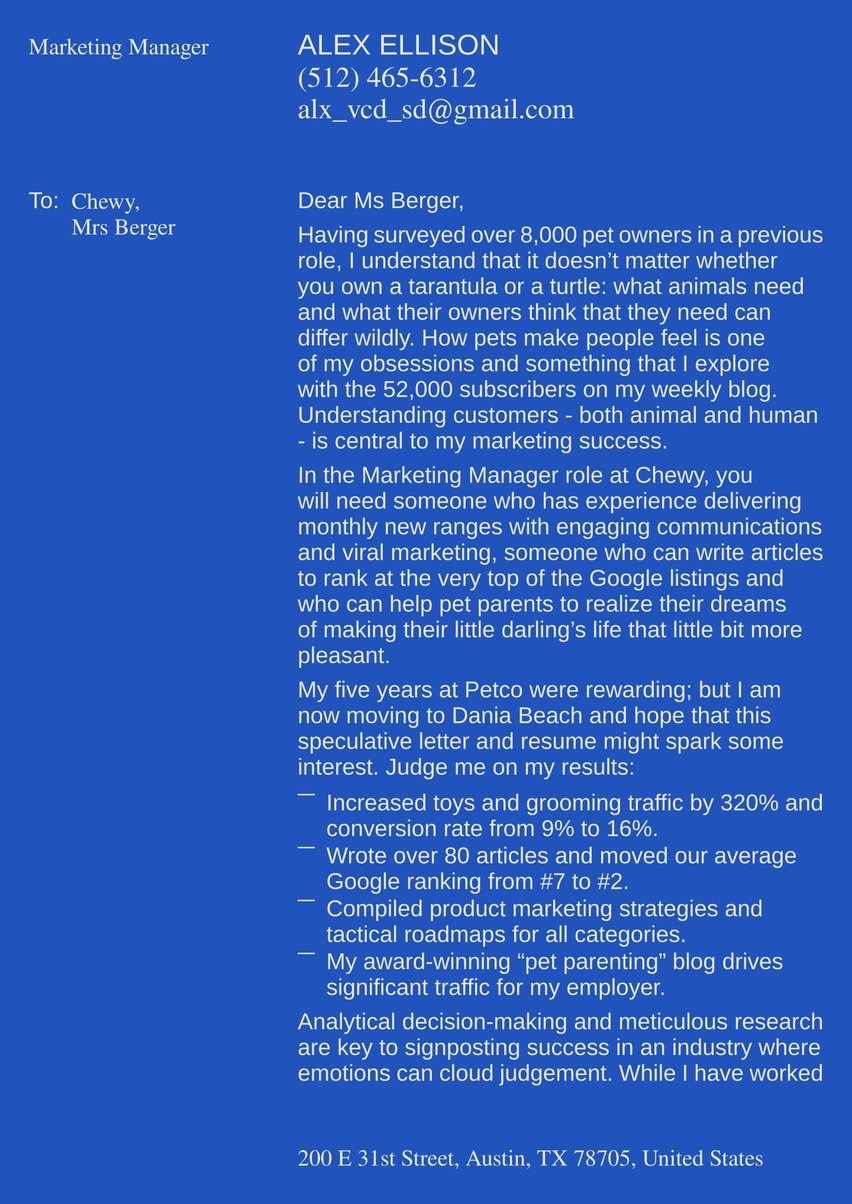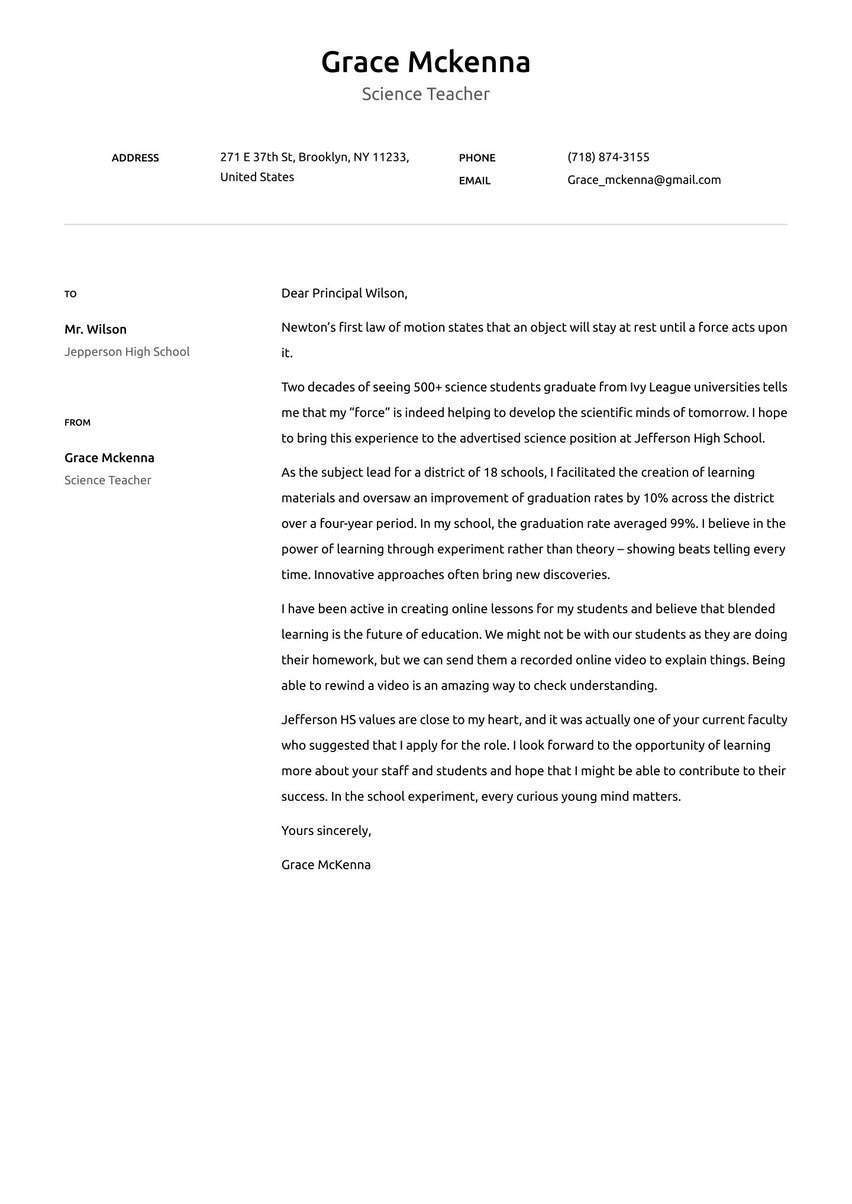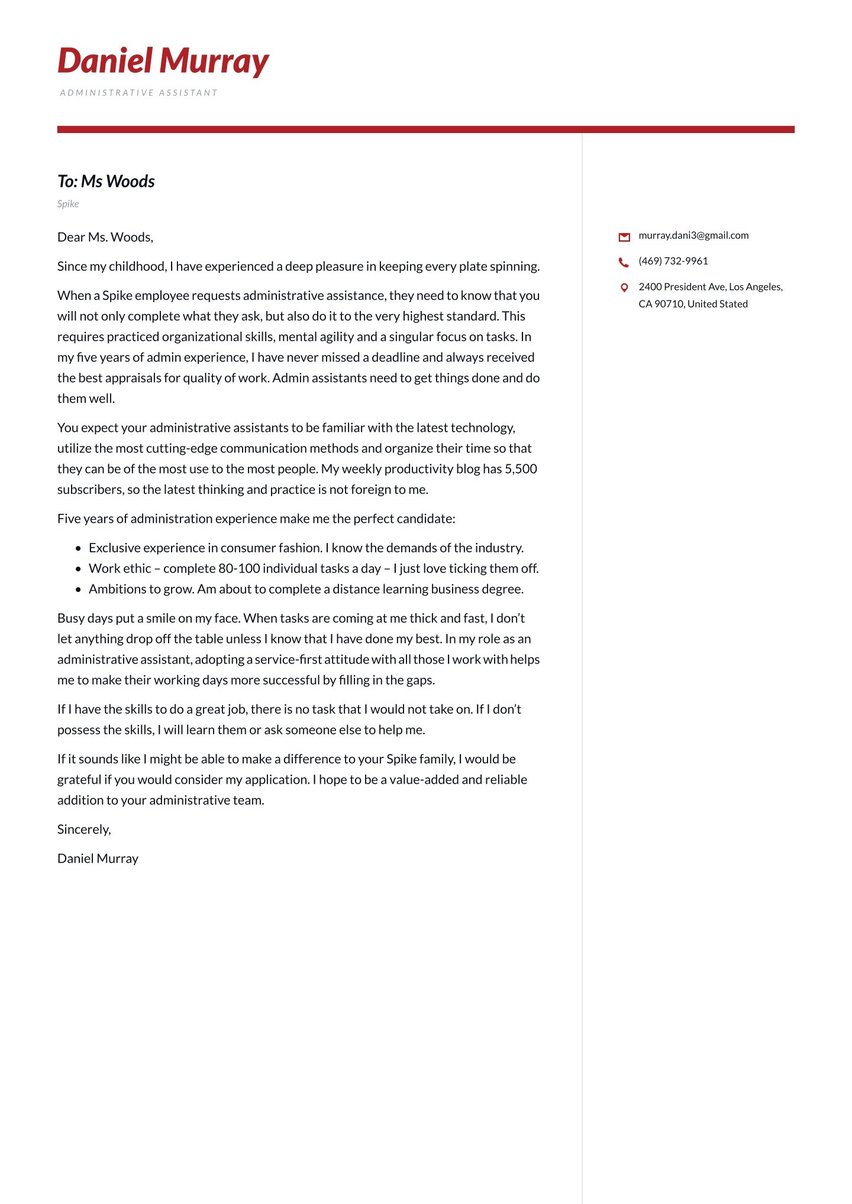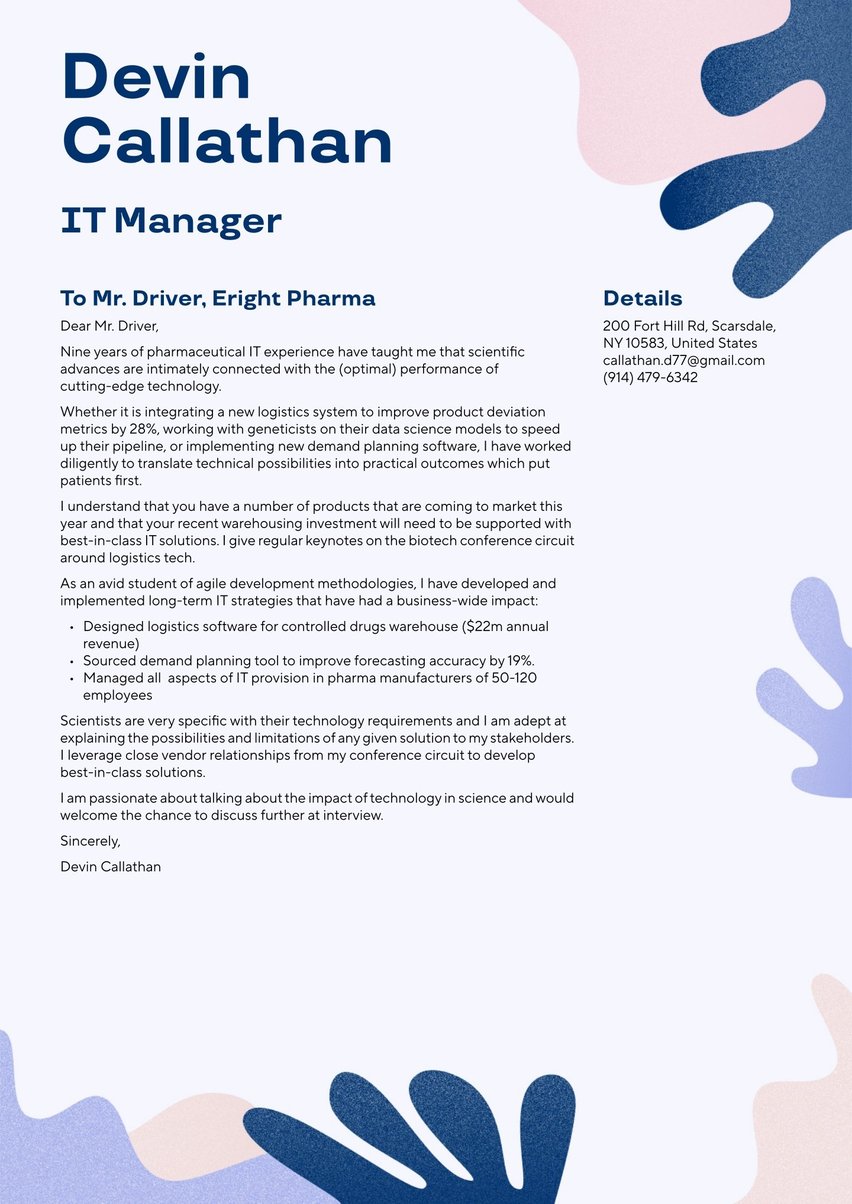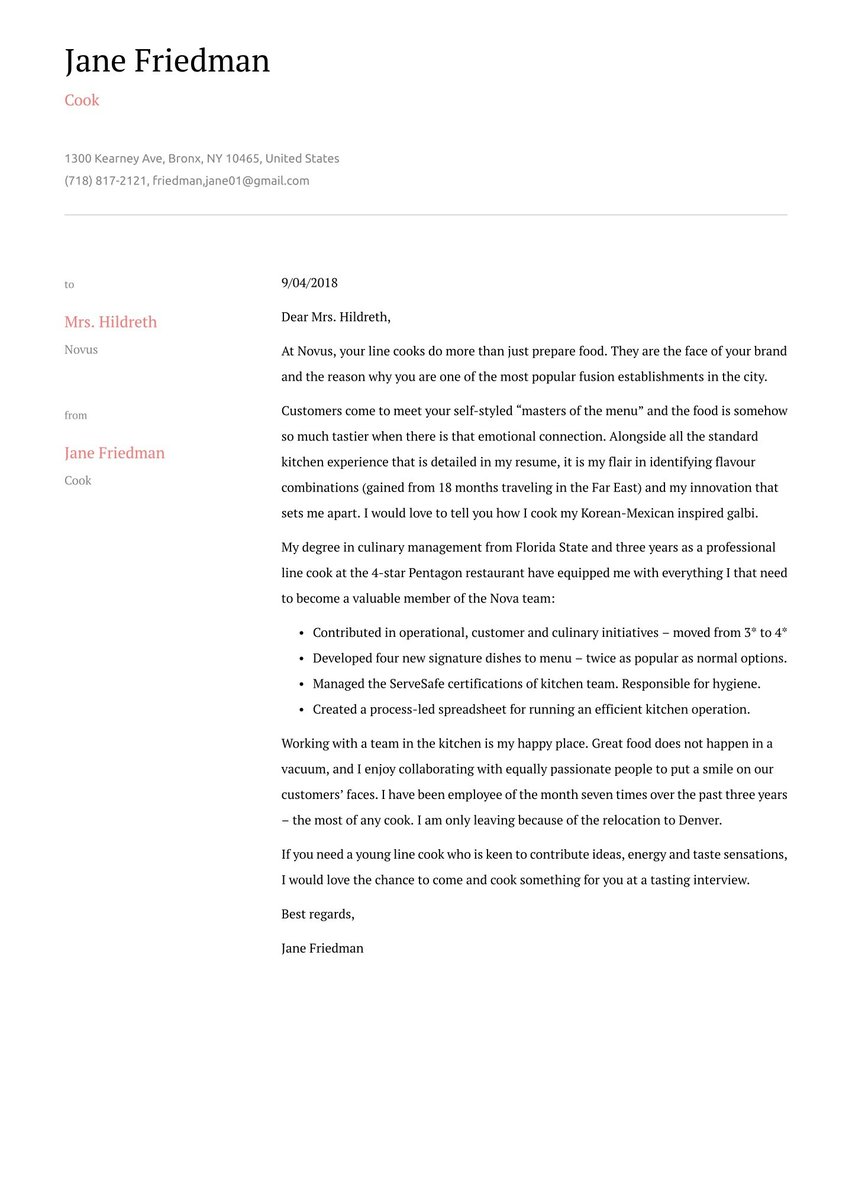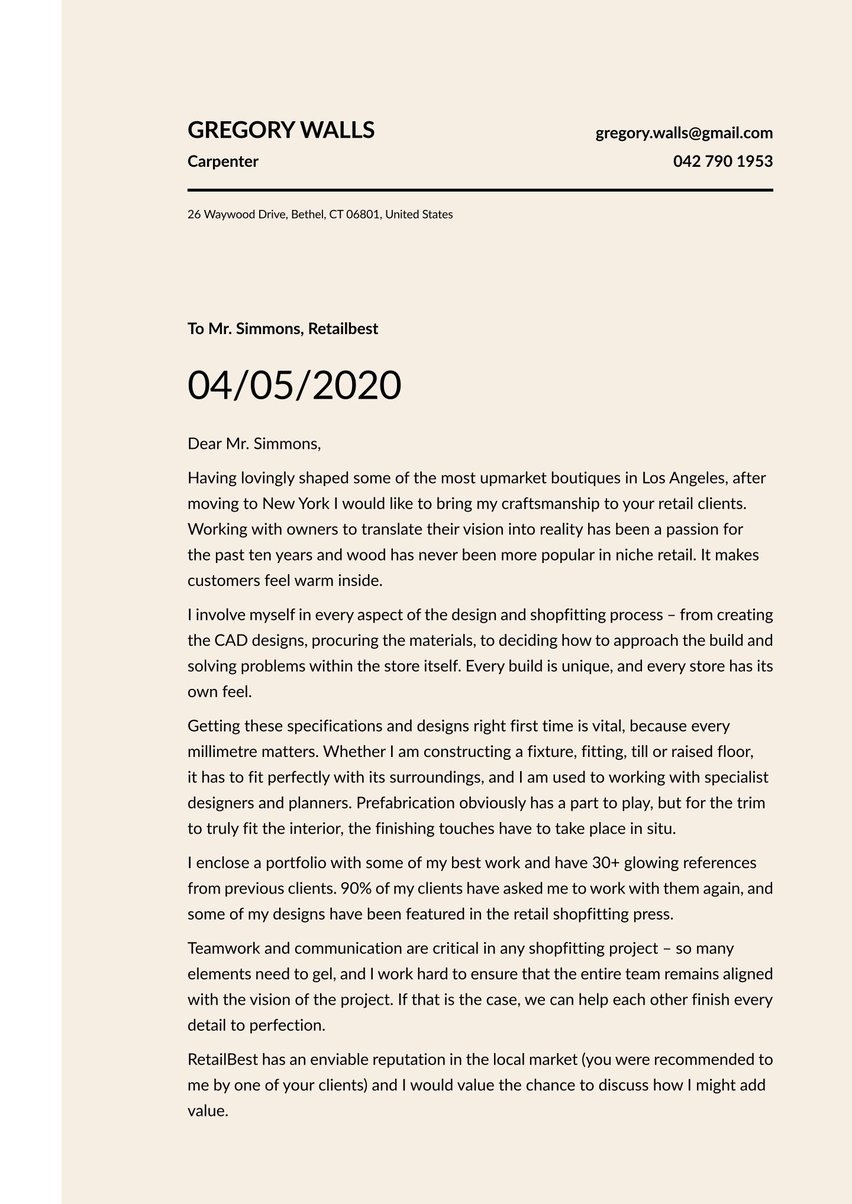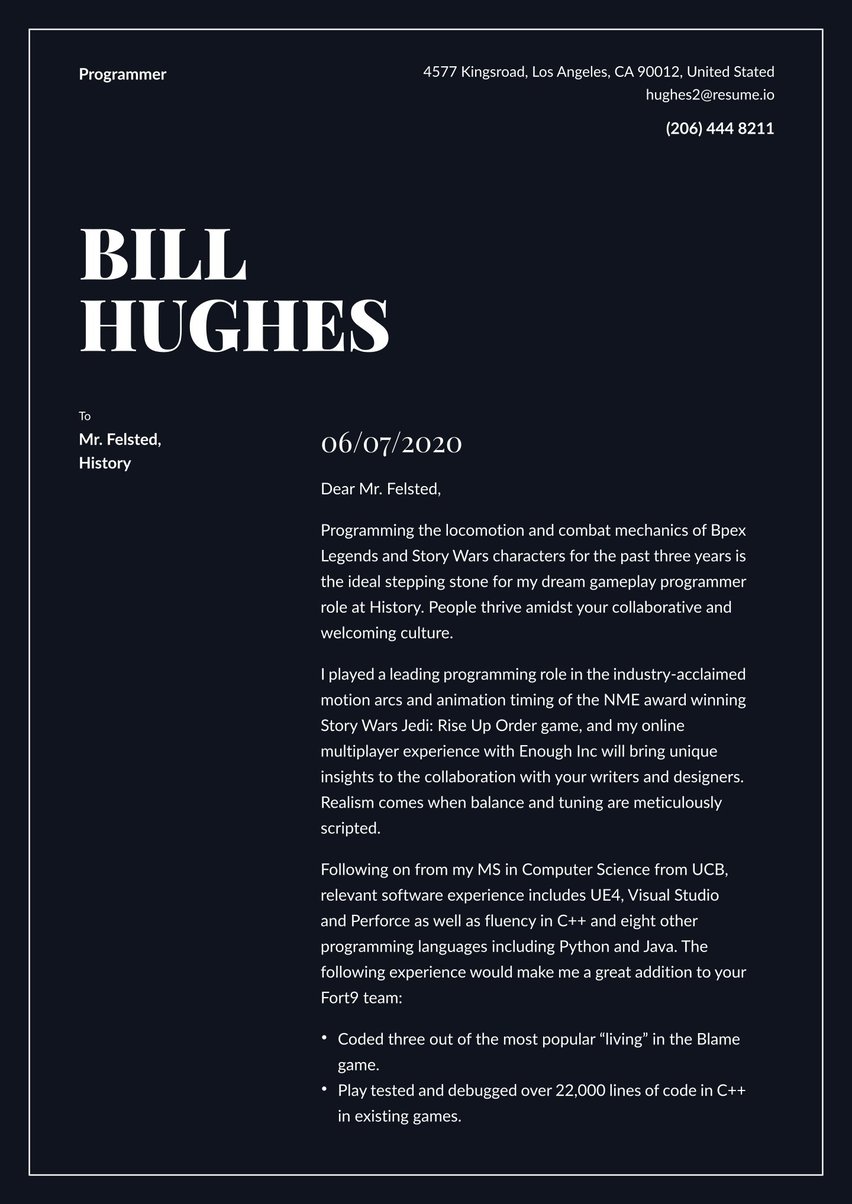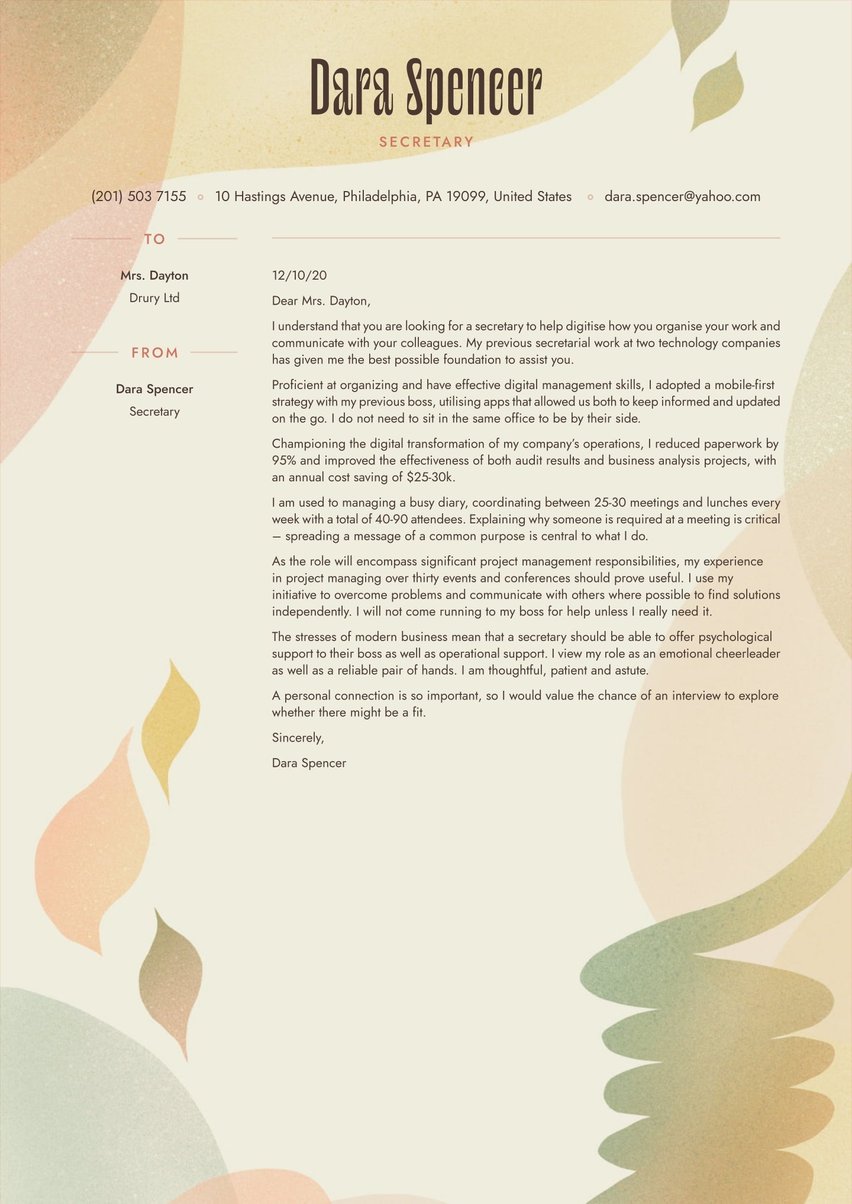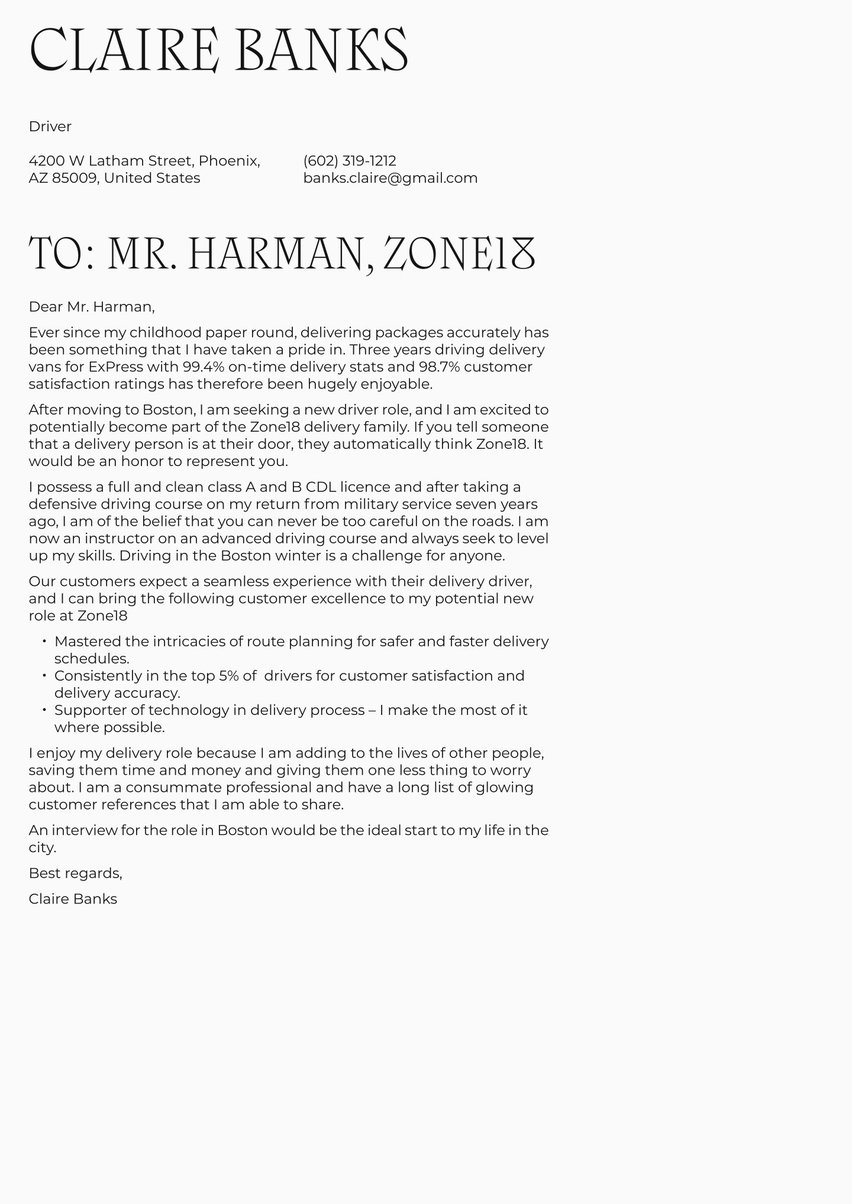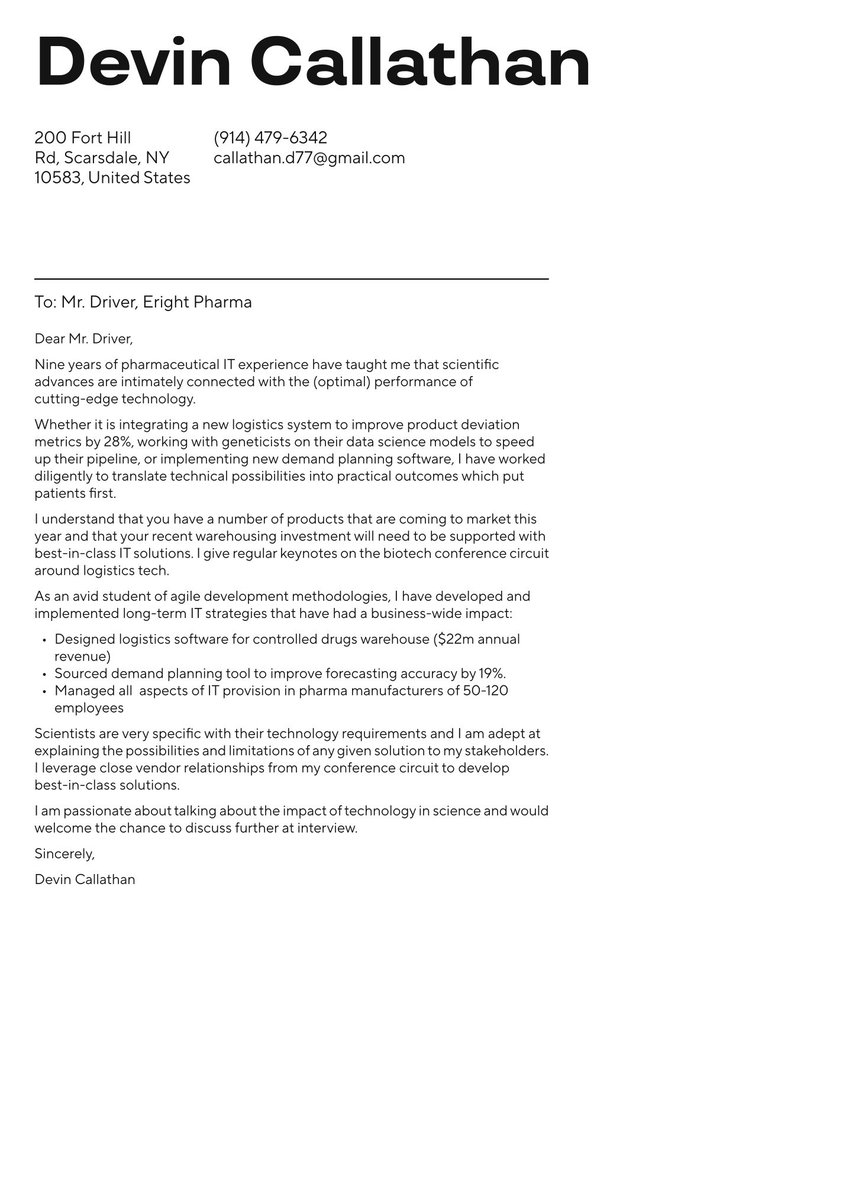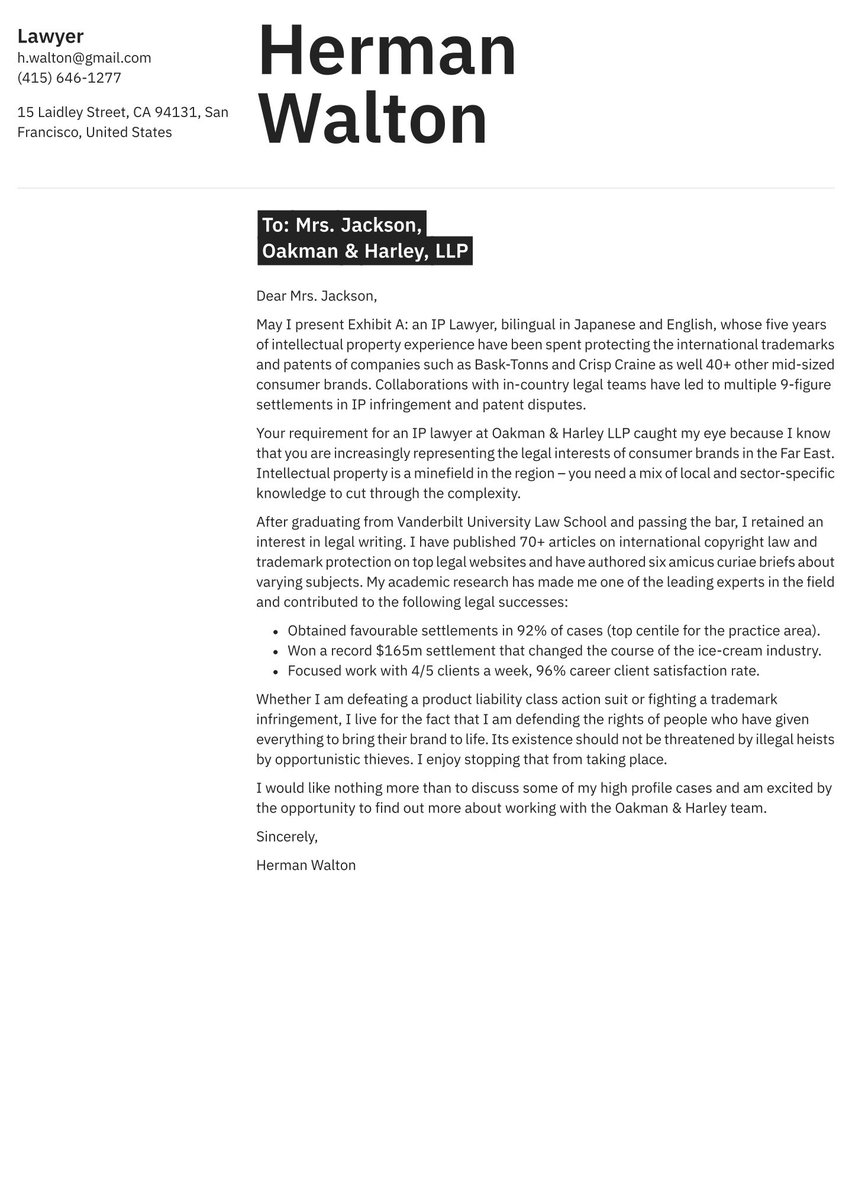Content writers are the born wordsmiths of the modern world. Whether you’re writing guides, blogs, ebooks, or newsletters, your aim is simple: to spark interest in the reader.
When applying for one of these highly sought-after roles, a perfectly-worded cover letter is your secret weapon. That’s where we can help you! In the following writing guide, along with the content writer cover letter example, we will be looking at these topics:
- The best format for your cover letter
- Expert-backed advice on how to write each section of the letter
- How to write a cover letter even if you have zero experience
- The most common mistakes you have to avoid to boost your chances
Best format for a content writer cover letter
You’re something of a word wizard but make sure you don’t get carried away. When writing your cover letter, sticking to a solid structure will keep you from veering off in the wrong direction. With that in mind, your content writer cover letter should include the following:
- The cover letter header
- The greeting/salutation
- The cover letter intro
- The middle paragraphs (body of the letter)
- The ending paragraph of your cover letter (conclusion and call-to-action)
If you’re completely new to applying for jobs, don’t panic. We will fill you in here. You can get started by reading our guide on what cover letters are and why they are important. As a golden rule, this letter should be short and sweet — try to stick to around 300 words.
Looking for some inspiration here? Take a peek at our content writer cover letter example:
Dear Ms. Carrington,
Content writing has never been more important to express the positioning and value of companies and products. Throughout my career, I have written on a diverse range of topics, in the technology sector. My background in journalism has provided me with strong research, interviewing, and storytelling skills.
As a freelancer, I have worked with over 80 clients, producing over 2,000 articles and blog posts which have generated more than 5 million views. I enjoy writing my personal technology blog every week – it is regularly mentioned on TechCrunch, the Verge, Mashable, and VentureBeat. I have been a regular contributor for GizModo, Wired, and CNET. I have consistently received positive feedback from editors and clients alike, who have praised my ability to produce engaging, high-quality content under tight deadlines.
I work best when I have the opportunity to work for a long-term client that I can get to know well. This is not always possible when working as a freelancer and that is why I hope to join you, as your client list is unsurpassed. I am proficient in developing SEO strategies – organic search has always been a focus for my writing career.
My previous experience of working in-house allows me to step into the mind of a client. At Nanfrith, I played a pivotal role in increasing the company's blog readership by 75% in just six months by developing a data-driven content strategy and incorporating engaging visuals. Additionally, my whitepapers generated over 1,000 leads and contributed to a 40% increase in the company's conversion rate.
I look forward to the possibility of an interview to understand your content strategy and how I might be able to assist your clients in telling their stories.
Sincerely,
Landon Miller
If you want some more inspiration here, we’ve got your back. Check out our related cover letter samples and writing guides:
Cover letter header
Before you can get down to the nitty-gritty writing, you first need to deal with the cover letter header. This line sits at the top of your document and serves an important task. It includes your name, email address, and phone number. Sometimes, you may also want to slide in your home location for good measure.
Should you “wow” a recruiter with an attractive cover letter, they are going to want to get in touch with you. By placing these crucial details in an obvious place on the page, you make that process straightforward for them. Oh, and ensure that this information is easy to read.
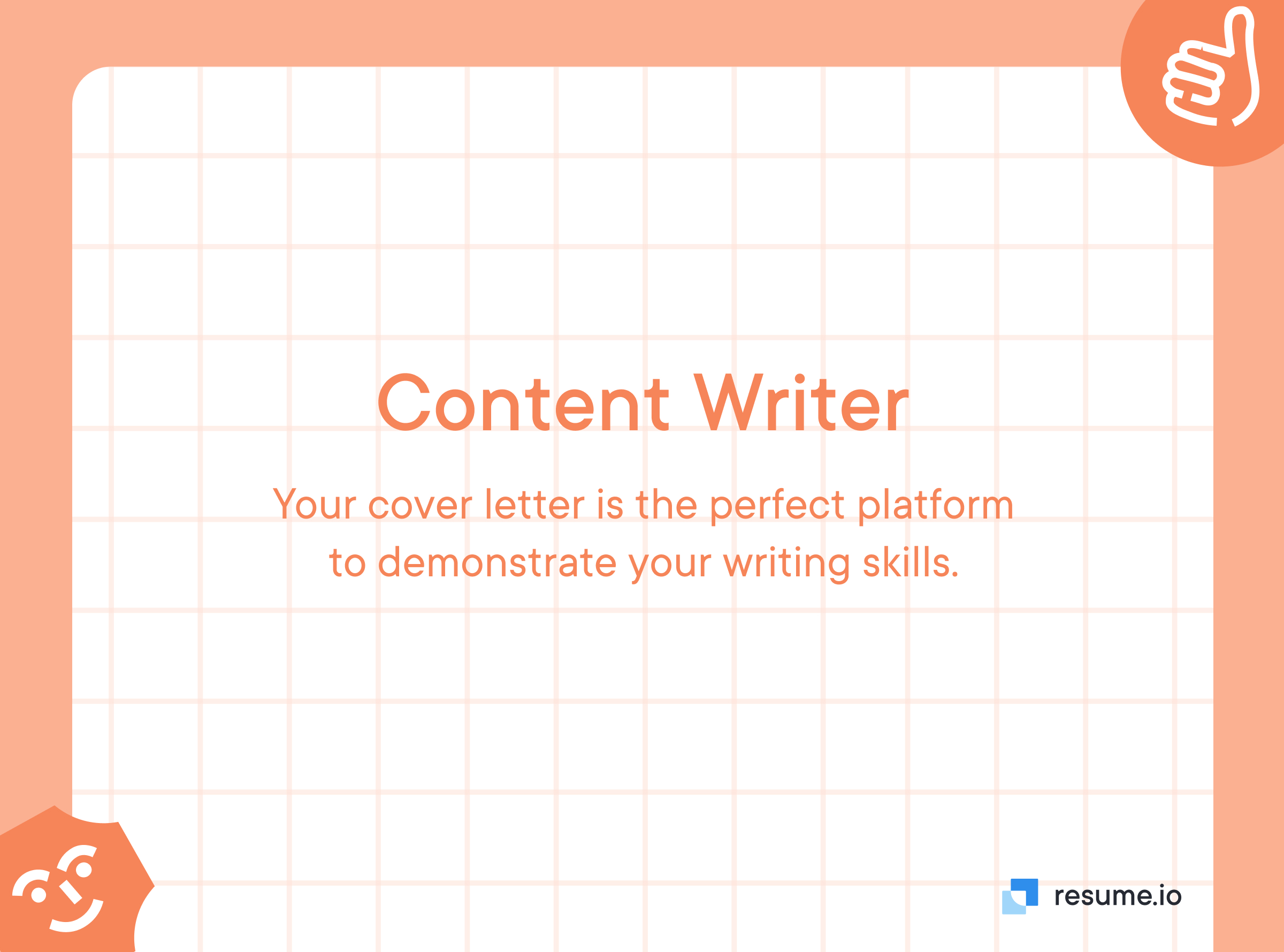
Cover letter greeting
Say “hey there” to the reader — except not in those exact words. Cover letters are formal affairs so you need to make sure you address the reader properly. If you happen to know the hiring manager’s name, use it. Go with the professional approach and write “Dear Mr. Ellis,” for instance. Should you not know their name, use “Dear hiring team” instead.
Cover letter introduction
As a content writer, you already know the power of an interesting hook. The cover letter introduction needs to be strong, engaging, and leave the reader wanting more. Rather than trying to cram all of your professional worth into this section, pick one or two points.
What will turn the recruiter’s head? Awards, proven track records, and big-name brands all have the potential to make a hiring manager take a second look at your application. For example, you may want to start with “As an award-winning writer” or “Having worked on Starbucks’ external communications team.” Lead with an impressive nugget of information.
Dear Ms. Carrington,
Content writing has never been more important to express the positioning and value of companies and products. Throughout my career, I have written on a diverse range of topics, in the technology sector. My background in journalism has provided me with strong research, interviewing, and storytelling skills.
Always back up your claims
If you’re going to say you are “award-winning,” make sure you can back that up in your application. Which awards have you won exactly, and when? Don’t leave the recruiter guessing. Include them in your cover letter or elsewhere in your content writer resume.
Cover letter middle part (body)
The middle paragraphs of cover letters are arguably the most important. Use this space to showcase your worth as a content writer. While the general tone should be formal, you can allow your personality to shine through your writing. Here are some topics you may cover:
- Your experience. What companies have you worked for? What type of content have you produced? Is there a piece of work of which you are particularly proud?
- Your know-how. What expertise are you bringing to the table? Do you have a working knowledge of SEO? Can you edit and proofread as well as write?
- Special achievements. Have you won an award for your work? Did you contribute to a large-scale project? Did you study under a well-known author? Shout about it.
As a freelancer, I have worked with over 80 clients, producing over 2,000 articles and blog posts which have generated more than 5 million views. I enjoy writing my personal technology blog every week – it is regularly mentioned on TechCrunch, the Verge, Mashable, and VentureBeat. I have been a regular contributor for GizModo, Wired, and CNET. I have consistently received positive feedback from editors and clients alike, who have praised my ability to produce engaging, high-quality content under tight deadlines.
I work best when I have the opportunity to work for a long-term client that I can get to know well. This is not always possible when working as a freelancer and that is why I hope to join you, as your client list is unsurpassed. I am proficient in developing SEO strategies – organic search has always been a focus for my writing career.
My previous experience of working in-house allows me to step into the mind of a client. At Nanfrith, I played a pivotal role in increasing the company's blog readership by 75% in just six months by developing a data-driven content strategy and incorporating engaging visuals. Additionally, my whitepapers generated over 1,000 leads and contributed to a 40% increase in the company's conversion rate.
Mind your lexicon!
Content writers should have a wide vocabulary. So, it makes sense to flex your creative muscles when writing your cover letter. However, if the recruiter needs a dictionary to understand your application, that may be a barrier. Always write for a wide audience.
How to close a content writer cover letter (conclusion and sign-off)
When you’ve said your piece, it’s time to close your content writer cover letter. As the recruiter moves toward the end of the letter, they will subconsciously spend more time reading the closing statement. For that reason, you should pay extra attention to this part.
End on an optimistic note and use a positive tone of voice. You might want to include a call to action (CTA) encouraging the hiring manager to reach out to you with any questions.
I look forward to the possibility of an interview to understand your content strategy and how I might be able to assist your clients in telling their stories.
Sincerely,
Landon Miller
Content writer cover letter with no experience
Are you a fledgling content writer, ready to take the professional world by storm? You might think that you need tons of experience to land a position. However, everyone has to start somewhere. If you are a recent graduate — or even a career-changer — your cover letter may help you break into the industry. Let’s take a look at what you could include:
- Voluntary experience. Okay, so you might not have any professional writing experience. But, if you love using words to express yourself, we bet you’ve got some voluntary experience under your belt. If you’ve started your own blog, written for a local free publication, or even just worked on your school newspaper, say so.
- Company knowledge. As a content writer, you are often the mouthpiece of the business. That means that you need to know all there is to know about the company when you work there. Get a head start and weave in your knowledge.
- Communication skills. If you haven’t worked as a writer before now, consider the other ways you’ve used your communication skills. For example, if your last role was as a receptionist, you might want to focus on your email writing skills. Talk about how you can adapt to different tones and voices on behalf of the business.
Basic mistakes in a content writer cover letter (and how to avoid them)
You’ve written your content writer cover letter and you’re feeling pretty proud of your work. However, if you make one misstep on this document, you might ruin your chances of success. Before you send the letter off, you need to check it for these common mistakes:
- Spelling and grammar errors. Since you’re applying to be a content writer, the reader is likely to scrutinize your cover letter. If you have typos and grammatical issues in your application, they won’t trust you to deliver clean content.
- Lack of personality. Writers need to have a way with words. If your cover letter reads like the back of a cereal box, it’s time to edit it. Make sure that you weave your unique personality and tone of voice throughout every paragraph of the letter.
- Too much information. Trying to cram in your entire professional history? Save it for your memoir. When writing a cover letter, less is often more. Challenge yourself to stick to the 300-word count and edit back if you need to do so.
Key takeaways
- Tell your content writing story with a cover letter that captivates the reader.
- Pick out your values and weave them into the narrative of the letter.
- Make sure you spellcheck your cover letter before you hit the “send” button.
- Use one of our market-researched cover letter templates to stand out from the competition for all the right reasons!


